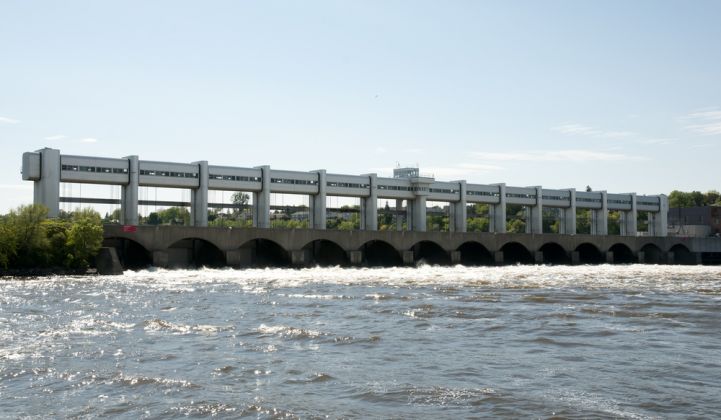Vermont’s Public Service Board has issued siting approval for the New England Clean Power Link Transmission Line, which will carry Canadian hydro and wind energy to the Northeast.
The 1,000-megawatt Clean Power Link will run about 150 miles from the U.S.-Canadian border, travel under Lake Champlain, and terminate at a new converter station in Ludlow, Vermont. The project is being built by merchant developer TDI New England and has an estimated cost of $1.2 billion.
The high-voltage direct-current transmission line will connect with Hydro-Québec on the Canadian side, bringing hydropower and also possibly wind power from the province.
“This is more than just hydro,” said Donald Jessome, CEO of TDI New England. “We’ve connected into the Quebec transmission system for many reasons. There are large hydro resources available to ship. There are also wind developments. There’s potential from upstate New York and Ontario, where there are other resources that could be connected.”
TDI New England has already found seven Canadian and New England electric suppliers that have expressed interest in transmitting 3,200 megawatts of power over the new transmission line. Any supplier has to meet TDI’s criteria, which include the requirement that the resource moved across the Clean Power Link helps New England states meet their greenhouse-gas reduction goals.
But the Clean Power Link is not just about carbon-reduction goals; it’s also about reliability. New England could face retirements of more than 8,000 megawatts of non-gas-fired generation capacity by 2020, according to the region’s independent system operator. If all of that capacity were to retire, ISO-NE has estimated that an additional 6,300 megawatts of capacity will be needed. Energy from the Clean Power Link will help to diversify a regional fuel supply that is heavily dependent on natural gas, an issue that comes into sharp focus when prices spike during cold snaps.
In the U.S., HVDC technology has been slow to be taken up, despite the increasing need to move renewables, in particular wind resources, to load centers. There are only a handful of modern HVDC projects underway in the U.S., such as the TransWest Express, which will connect Wyoming wind power to California. The ambitious Tres Amigas SuperStation, which would connect three regional grids with superconducting HVDC, has seen significant setbacks.
“We chose this technology very carefully,” said Jessome. He said the primary benefit for this project was that it is a cable that can be buried under water and put in existing rights of way, which lowers the time and cost of site permitting. There are also other ancillary benefits that grid operators like, such as black-start capability and voltage support capability. “We see HVDC becoming much more prevalent,” he added, “especially in the Northeast.”
On the other side of the globe, China is investing heavily in HVDC, as is South Korea. In China, HVDC will make up 40 percent of the country's 300 gigawatts of new transmission capacity, according to GTM Research. In Europe, HVDC is being used to link offshore wind power in the North Sea to northern Europe.
Construction is expected to begin this year, with commercial operation slated to commence in 2019. Vendors for the transmission line have not been announced. Once in operation, the project is expected to contribute more than $700 million in public benefits over its 40-year lifespan in the form of lease payments, environmental protections for Lake Champlain, and other advantages.



